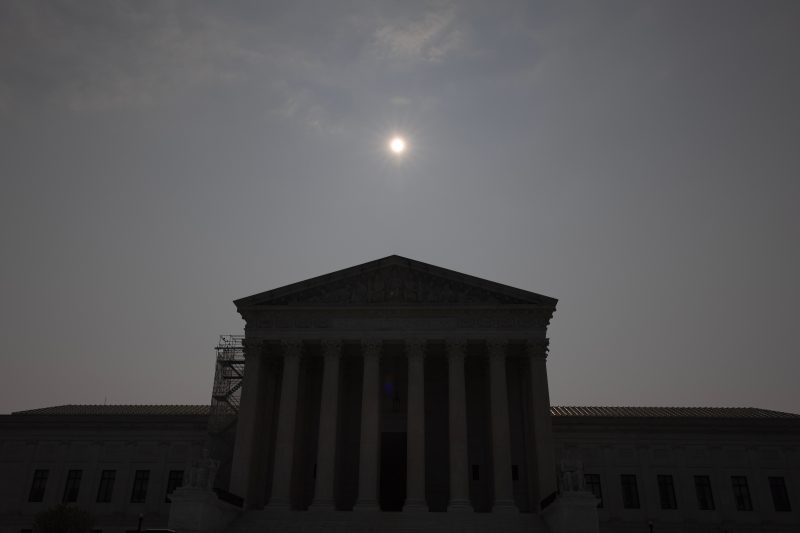There are two people on Earth who, more than anyone else, seem to have an active interest in presenting the U.S. Supreme Court as evenhanded.
One is Chief Justice John G. Roberts Jr., whose legacy is entwined with public perceptions of the court’s distance from partisan politics and its adherence to ethics — both of which are on historically shaky ground.
The other is Senate Minority Leader Mitch McConnell (R-Ky.). His gambit to refuse consideration of President Barack Obama’s nomination of Merrick Garland to the court in 2016 — and his complete reversal of his stated reasons for doing so to rush President Donald Trump’s nomination of Amy Coney Barrett four years later — is responsible for the court’s current 6-3 conservative majority.
McConnell probably has few qualms about having deployed his senatorial power to reinforce his party’s judicial power, but the court’s acceptance of and decisions on cases benefiting the political right have contributed to a backlash against the body. So McConnell is working to present the court as centrist, as he did in a Washington Post opinion essay Tuesday.
“Democrats have moved from complaining about the Supreme Court’s reasoning to questioning its independence,” he wrote. “… These escalating attacks from the left betray a fundamental misunderstanding of the court’s structure and purpose. It is an ideologically unpredictable body that takes cases as they come and produces diverse outcomes.”
To bolster that point, McConnell presented data showing how often the justices agreed on decisions — and how often ideologically diverging justices wound up on the same side of an argument.
“Evidence from this past term indicates that the court’s defining characteristic isn’t polarization,” McConnell argued. “It is, instead, a politically unpredictable center.”
Well, not really.
Looking at the nearly 60 cases the court heard in its most recent session, it is true that the justices agreed more often than not. Roberts and Justices Brett M. Kavanaugh and Barrett were more likely to be in the majority than their colleagues, but each justice was in the majority at least three-quarters of the time thanks to the preponderance of unanimous decisions.
(The charts in this story identify justices appointed by Democrats with gray bars.)
But there is an important subset of cases. In those major cases, the picture is different; there, the justices appointed by Democrats — I’ll just call them the liberal justices — were less likely to be part of the majority.
Granted, there weren’t a lot of those cases, only a dozen as identified by SCOTUSblog. But you can see below the difference in agreement that existed between cases overall (in shades of gray) and in major cases (in shades of red).
By our tally, about a third of the decided cases yielded either a 6-3 or 5-4 result. Half of the 6-3 cases were split between justices appointed by Republican presidents and the three appointed by Democrats. In 5-4 cases, just under half were decided with solely the votes of Republican appointees.
That said, the liberal justices were consistently less likely than their colleagues to be in the majority in those more narrowly decided cases.
When we look at the major cases, though, the divide is more stark. There, the liberal justices were in the majority on only two of seven cases: Allen v. Milligan and Moore v. Harper, both of which dealt with the power of state legislatures to set election rules and both of which saw the liberals joined by Roberts and Kavanaugh.
It is true that the Supreme Court’s decisions are not always neatly categorized. Justices join majority opinions or write their own dissents or join the concurring or dissenting opinions of their colleagues in full or in part. It is also true that the justices often join with seeming ideological opposites to agree on a decision.
And it is also true that this court delivered important victories for conservative actors, powered by the conservative majority McConnell helped orchestrate.



























